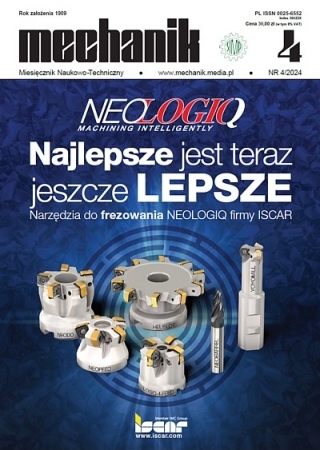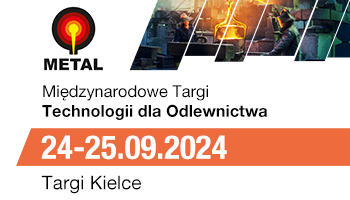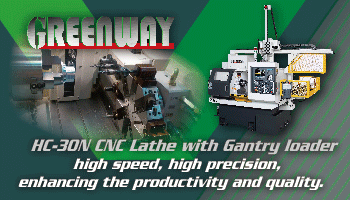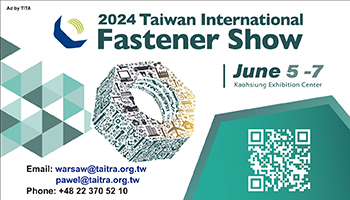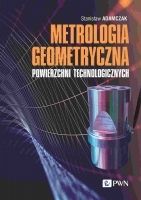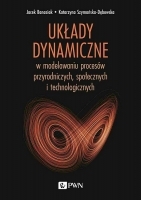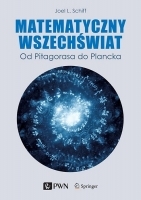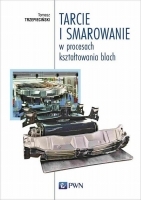Methods and devices for measuring metal cutting friction and wear *
Metody i urządzenia do pomiaru tarcia i zużycia w skrawaniu metali
Mechanik nr 02/2019 - Obróbka skrawaniem
ABSTRACT: This paper presents different constructions of tribometers for determination of friction and tool wear developed in the cutting zone between the cutting tool and the workpiece materials. They are classified as the closed and open tribotesters. Relevant measuring techniques of various process outputs such as cutting forces, tool wear, cutting temperature and heat flux entering the contact surface of the rubbing element are outlined. Some limitations and practical applications are highlighted.
KEYWORDS: metal cutting, friction, wear, tribometer
STRESZCZENIE: W artykule zaprezentowano różne konstrukcje tribometrów do wyznaczania współczynnika tarcia i zużycia narzędzia w strefie skrawania – między narzędziem skrawającym i obrabianym materiałem. Urządzenia te sklasyfikowano jako zamknięte i otwarte tribotestery. Opisano odpowiednie techniki pomiarowe różnych wielkości wyjściowych procesu, takich jak: składowe siły skrawania, zużycie ostrza, temperatura skrawania oraz strumień ciepła wnikający do powierzchni kontaktu trących elementów. Wyjaśniono niektóre ograniczenia i podano praktyczne zastosowania tribometrów.
SŁOWA KLUCZOWE: skrawanie metali, tarcie, zużycie, tribometr
BIBLIOGRAFIA / BIBLIOGRAPHY:
- Melkote S., Grzesik W., Outeiro J., Rech J., Schulze V., Attia H., Arrazoal P.J., M’Saoubi R., Saldana Ch. “Advances in material and friction data for model ling of metal machining”. CIRP Annals – Manufacturing Technology. 66, 2 (2017): pp. 731–754.
- Grzesik W. “Advanced machining processes of metallic materials”. Amsterdam: Elsevier, 2017.
- Grzesik W., Zalisz Z., Niesłony P. “Friction and wear testing of multilayer coatings on carbide substrates for dry machining applications”. Surface and Coatings Technology. 155 (2002): pp. 37–45.
- Grzesik W., Rech J., Żak K. “Determination of friction in metal cutting with tool wear and flank face effects”. Wear. 317 (2017): pp. 8–16.
- Hutchings I.M. “Abrasive and erosive wear tests for thin coatings: a unified approach”. Tribology International. 31 (1998): pp. 5–15.
- Grzesik W., Zalisz Z., Król S., Niesłony P. “Investigations of friction and wear mechanisms of the PVD-TiAlN coated carbide in dry sliding against steels and cast iron”. Wear. 261 (2006): pp. 1191–1200.
- Adamczak S., Świderski J., Dobrowolski T. “The assessment of the surface texture friction node components after tribological tests”. Mechanik. 12 (2017): pp. 1144–1147.
- Hedenquist P., Olsson M. “Sliding wear testing of coated cutting tool materials”. Tribology International. 24 (1991): pp. 143–150.
- Ozlu E., Budak E., Molinari A. “Analytical and experimental investigation of rake contact and friction behavior in metal cutting”. Int. J. Machine Tool and Manufacture. 49 (2009): pp. 865–875.
- Bogdan-Chudy M., Niesłony P. „Ocena warunków tribologicznych podczas skrawania stopu Inconel 718 płytką z węglika spiekanego”. Mechanik. 8–9 (2015): pp. 91–97.
- Rech J., Claudin C., Grzesik W., Zalisz Z. “Characterization of the friction properties of various coatings at the tool–chip–workpiece interfaces in dry machining of AISI 4140 steel”. Proc. IMechE Part J: J. Engineering Tribology. 222 (2008): pp. 617–627.
- Zemzemi F., Rech J., Ben Salem W., Dogui A., Kapsa Ph. “Identification of friction and heat partition model at the tool-chip-workpiece interfaces in dry cutting of an Inconel 718 alloy with cbn and coated carbide tools”. Advances in Manufacturing Science and Technology. 38 (2014): pp. 5–21.
- Olsson M., Söderberg S., Jacobsson S., Hogmark S. “Simulation of cutting tool wear by a modified pin-on-disc test”. Int. J. Machine Tool and Manufacture. 29 (1989): pp. 377–390.
- Smolenicki D., Boos J., Kuster F., Roelofs H., Wyen C.F. “In-process measurement of friction coefficient in orthogonal cutting”. CIRP Annals – Manufacturing Technology. 63 (2014): pp. 97–100.
- Puls H., Klocke F., Lung D. “Experimental investigation on friction under metal cutting conditions”. Wear. 310 (2014): pp. 63–71.
- Zemzemi F., Rech J., Ben Salem W., Dogui A., Kapsa Ph. “Identification of a friction model at tool/chip/workpiece interfaces in dry machining of AIS14142 treated steels”. Journal of Materials Processing Technology. 209 (2009): pp. 3978–3990.
- Rech J., Claudin C., Polly P., Courbon C. “New aspects of metrology of frictional behaviour in metal cutting”. Mechanik. 11 (2016): pp. 1751–1753.
DOI: https://doi.org/10.17814/mechanik.2019.2.16
* Artykuł recenzowany




